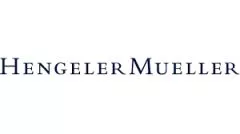- within Antitrust/Competition Law topic(s)
- with readers working within the Banking & Credit industries
While it is getting cold outside, and everyone is preparing for the flu season of the year, the Commission is continuously and vigorously enforcing the bloc's competition law in the pharmaceutical sector. The Commission's recently published Update on Competition Enforcement in the Pharmaceutical Sector is a reminder that the pharmaceutical sector remains subject to intense antitrust scrutiny to ensure access to affordable and innovative drugs. What can pharmaceutical companies learn from recent abuse of dominance, cartel, merger control and State aid cases? Are stricter compliance rules needed to avoid running afoul of the antitrust rules and attracting the Commission's attention?
Teva – Double Trouble: Misuse of Divisional Patents and No Gossiping Allowed?!
On 31 October 2024, the Commission imposed a €462.6 million fine on Teva (Case AT.40588). The Commission assessed two new types of an abuse of a dominant position under Article 102 TFEU in the pharmaceutical industry – the misuse of divisional patents and the implementation of a systematic disparagement campaign. Both types of behavior are highly relevant to the pharmaceutical industry.
First, according to the Commission, Teva's continuous strategy of filing and withdrawing divisional patents to artificially extend the protection for the pharmaceutical ingredient of its blockbuster drug Copaxone (glatiramer acetate) amounts to a misuse of the patent system and a violation of Article 102 TFEU. Divisional patents derive from earlier parent patent applications and share similar content but may focus on different aspects of the invention (e.g., the manufacturing process or dosing) and are treated independently in terms of their validity. Competitors challenged Teva's divisional patents to clear the way to the market. However, right before the EU Patent Office (EPO) was able to decide on the validity of the patents, Teva withdrew its application as a rejection would have had severe consequences for other divisional patent applications. By gradually filing, enforcing, and withdrawing divisional patents, Teva allegedly sought to create legal uncertainty about its patents, which can negatively impact other competitors' market entrances.
Moreover, Teva was the first undertaking sanctioned for what the Commission considered a systematic disparagement campaign against a competing product's safety, efficacy, and therapeutic equivalence, despite it having obtained the relevant health authorities' approval confirming these attributes. As Teva's patent for its multiple sclerosis drug Copaxone was nearing its expiration date, Teva, according to the Commission, spread false information to create doubts about the competitor's product's safety. Unlike in the Vifor case, where an infringement of antitrust law was ultimately not established following Vifor's commitments to launch a communication campaign to restore the reputation of the competitor's product, the Commission has now concluded that Teva's abuses concerning the misuse of the patent system and the disparagement campaign were complementary and together amounted to a single and continuous infringement of Article 102 TFEU. As Teva has stated that the Commission's findings are “believed to be extreme, untested and factually unsupported”, it has announced that it will appeal the decision.
Once the full decision of the Commission is published, more detailed guidance on the Commission's assessment will be available. It might provide important insights into the lawfulness of divisional patent strategies and the misuse of patent systems. Similar strategies had already been identified by the Commission in its 2009 pharmaceutical sector inquiry as being part of the “toolbox” used by pharmaceutical companies to potentially restrict competition in the pharmaceutical sector. As a result, the Administrative Council of the European Patent Organization amended the Implementing Regulations to the European Patent Convention (CA/D 2/09), limiting the possibilities for voluntary divisional patent applications and the period during which they can be filed. Moreover, the Teva case teaches that pharmaceutical companies must be aware that disparagement is not solely limited to objectively false information but can also include the spread of misleading information that could impact the behavior of customers, healthcare professionals or other competitors. The relevant legal test for external communication by pharmaceutical companies will therefore not only be determined by the relevant law against unfair competition and on advertising medicinal products, but increasingly also by antitrust law assessments.
SNBB – The Commission's first Cartel Case in the Pharmaceutical Sector
Back in 2023, the Commission investigated its first cartel case in the pharmaceutical sector, fining six companies for having coordinated and agreed on fixing the price of a pharmaceutical ingredient in digestion treatment as well as for allocating quotas (Case AT.40636). The fine amounted to a total of €13.4 million. The immunity applicant, C2 PHARMA, was not sanctioned. Two other companies were granted fine reductions under the Leniency Notice, while all companies received an additional settlement bonus. One pharmaceutical company, Alchem, was not addressed in the Commission's October 2023 decision, thus the investigation continued… making the first pharmaceutical cartel investigation also a hybrid case. In June 2024, Alchem was ultimately accused of the same anticompetitive conduct and of exchanging commercially sensitive information with competitors.
In November, Alchem responded to the Commission's statement of objections and said that it would continue to defend against the allegations in a closed-door hearing. It will be interesting to see what fine the Commission may impose on Alchem, should it decide that there was sufficient evidence of an infringement, and how it may account for the hybrid nature of the case.
Servier, Teva – Don't be my Competition! Pharma's Pay-for-Delay
“Pay-for-delay” agreements have been a key focus of the Commission's antitrust enforcement in the pharmaceutical sector. IP is usually not an antitrust lawyer's business, but it can become their concern if companies agree on refraining from competition against the patentee for some period, thus preventing competitors from entering the market.
Our newsletter in April 2024 discussed the Servier saga, which has now entered a new phase. In June, the European Court of Justice (ECJ) delivered nine judgments in the case, reaffirming its strict view on anti-competitive “pay-for-delay” arrangements in settlement agreements between Servier and other competitors (Cases C-176/19 P, C-201/19 P, C-151/19 P, C-144/19 P, C-164/19 P, C-166/19 P, C-197/19 P, C-198/19 P and C-207/19 P). In addition, although the two agreements between Krka and Servier did not involve any reverse payments, the Court found that the agreements were restrictive of competition by object because of the value transferred in relation to the settlement and license agreement. To determine whether the agreements are restrictive of competition, it is necessary to consider the wider economic context and not only the form of the agreements. In fact, the agreements had to be considered together and constituted a market-sharing strategy not to compete. The Court dismissed the first actions brought by Servier and Krka in respect of two of the three agreements in question, while the third agreement was referred to the General Court. The ECJ also clarified the analytical framework for “pay-for-delay” agreements: First, it needs to be examined whether the transfer of value may be fully justified by the necessity to compensate for the costs associated with, or disruption caused by the patent dispute. If that is not the case, it must be established whether the transfer of value can be attributed to nothing other than the commercial interest of the manufacturer not to engage in competition on the merits. As part of this analysis, courts must assess whether the payment was sufficiently large – yet not necessarily greater than the expected profits – to incentivize the generic drug company to refrain from entering the market, even if only for a certain period of time.
Teva was sanctioned last year for having side-deals with Cephalon in which Teva was to receive a net profit for dropping a generic challenge to Cephalon's drug for sleep disorders. On 4 January 2024, Teva launched an appeal against the General Court's decision (Case C-2/24 P), challenging the legal test that examined whether there was a plausible alternative explanation for the arrangement. Teva put forward that its conduct benefited consumers and thus caused pro-competitive effects. While the General Court was not convinced by these arguments, it remains to be seen if the ECJ will be persuaded this time. It provides the ECJ with another opportunity to specify the legal test for “pay-for-delay” agreements.
Novo Nordisk/Catalent – Vertical Effects in Mergers between Pharmaceutical Companies
While the intended Novo Holdings/Novo Nordisk/Catalent merger (M.11486) is apparently headed towards EU approval under the Merger Regulation and has already been cleared in Brazil, it is said to possibly have vertical foreclosure effects notably in the US and UK.
The issues among the industry have emerged due to Catalent's prominent role as a supplier and partner to most pharmaceutical companies. Novo Nordisk is said to hold a significant share of the weight loss and diabetes drugs market. Hence, concerns arise that the proposed merger could enhance Novo Nordisk's control over the production of these drugs, potentially choosing to prioritize the production of their own drugs and thereby limiting competition. This concern is further intensified by Novo Holdings' intention to acquire three Catalent production sites in the US, Italy and Belgium. The potential for drug shortages, rivals' restricted access to manufacturers and consumer harm represent significant concerns, ultimately leading to a dominant position of Novo Nordisk and reduced competition. Supply chain constraints have exerted further pressure on this deal. Recently, Catalent announced its commitment to continue working closely with competitors, promising that no changes will result from the merger.
The Commission has until 6 December 2024 to decide, but the absence of a “state-of-play” meeting with the parties is already a positive signal that the transaction could be cleared in Phase I. Still, in the event of a veto, the Danish drug giant has already announced that it has a “Plan B”.
Apart from the Novo Nordisk/Catalent case, further recent developments might influence mergers & acquisitions in the pharmaceutical industry going forward:
- The ECJ's Illumina/GRAIL judgment (Case C-611/22) has increased uncertainty about when and how below-the-threshold mergers will be investigated by antitrust authorities in the future. This is particularly relevant for mergers in the pharmaceutical sector which often concern targets with little or no revenue. Already in its Update on Competition Enforcement in the Pharmaceutical Sector the Commission announced that it will “actively monitor pharmaceutical transactions to identify concentrations that fall below the EU's and Member States' notification thresholds […]”.
- Interestingly, a European Commission-funded study by Lear, published on 28 November 2024, identified 89 out of 6,315 transactions in the pharmaceutical sector between 2014-2018 where the discontinuation of drug development efforts potentially warranted competition scrutiny. This corresponds to less than 1.5 % of all pharmaceutical deals. The study found that these drugs often overlapped in development stages and markets, suggesting – according to the Commission – that there might have been concerns around a “killer acquisition” theory of harm. The study also evaluated the Commission's ability to address such deals through antitrust tools and remedy design.
- The Commission's revised Market Definition Notice published in February 2024 builds on the concept of “innovation spaces” first introduced in Dow/DuPont (M.7932). While first applied in the agrochemical industry, the concept may also play a role in transactions in the pharmaceutical sector, as the Commission increases its focus on safeguarding innovation and potential competition. As highlighted by Illumina/GRAIL, the Commission appears to be determined to address perceived threats to innovation and potential competition even where it may be uncertain whether a product will ever see the light of day. The Commission's approach to the definition of innovation-driven markets and potential competition raises the question of legal boundaries to ensure legal certainty when defining markets for not-yet-existing products. It will have to be ensured that market analyses remain evidence-based – speculative or distant innovation harms must not serve as the basis for intervention. Proving a credible, imminent risk to competition is essential to strike a balance between protecting innovation competition and avoiding undue restrictions on corporate collaboration and investment. Ultimately, the ECJ may have to step in to clarify just how far the Commission may take innovation space theories of harm, while meeting its burden of showing that competitive harm is more likely than not to result from a merger.
Med4Cure – Commission approves €1 Billion State Aid for First Major EU Health Project
The Commission also uses its State aid tools in the pharmaceutical sector and it approved in May 2024 under EU State aid rules the first “Important Project of Common European Interest” (IPCEI) in the health sector, Med4Cure, a €1 billion initiative aimed at advancing healthcare innovation across the EU. Six Member States – Belgium, France, Hungary, Italy, Slovakia, and Spain – are collaborating with 13 companies (including nine SMEs) on 14 ambitious projects. These efforts will focus on developing treatments for unmet medical needs, such as rare diseases, creating more sustainable pharmaceutical production processes, and integrating advanced digital technologies into drug development.
The project is expected to attract €5.9 billion in private investments and generate around 6,000 jobs by its planned completion in 2036. It aligns with major EU goals, including the European Health Union, the Green Deal, and the updated Industrial Strategy, to build a greener, more resilient healthcare sector.
Strict rules ensure public funding is proportionate and minimizes market distortions, such as the implementation of a claw-back mechanism for those projects which have great economic success. Companies will also share their findings widely, promoting benefits across Europe. Overall, IPCEI Med4Cure aims to strengthen the EU's health industry and preparedness for future challenges while supporting groundbreaking medical advancements.
While Med4Cure is the first IPCEI in the health sector (out of overall 10 IPCEI) and since IPCEIs are supported from national budgets, Member States are in the driving seat to form an IPCEI. It seems likely that further initiatives in the health sector will be seen in the future, in particular in light of increased healthcare costs and European shortages of a number of drugs reported by pharmacies as being unavailable.
What's next?
Already in its 2009 sector inquiry, the Commission had identified an entire “toolbox” of practices by pharmaceutical companies that allegedly give rise to antitrust concerns. While some of these practices like “pay-for-delay” agreements have already been subject to indepth analyses, other practices, such as early-entry-agreements, have not yet received much attention. Considering the newest developments, pharmaceutical companies will need to be careful with their upcoming patents and communication about other competitors' products to avoid antitrust scrutiny. Other developments are expected soon. It will be interesting to see what strategies from the “toolbox” the Commission and other competition authorities will engage with in the future.
Venturing a look across the pond, we can also observe an increase in antitrust cases in the pharmaceutical industry. As an example, pharmaceutical companies in the US faced antitrust claims for allegedly engaging in “product hopping” by introducing new versions of existing drugs – also a strategy similar to the ones in the Commission's 2009 “toolbox”. In product-hopping cases, plaintiffs claim that originator companies breach antitrust laws by releasing new versions of drugs while discontinuing, disparaging, or undermining older versions, or by engaging in practices aimed at coercing purchases to allegedly hinder generic competition and substitution laws. It remains to be seen whether some of these “trends” will spill over from the US in the near future. In its latest Update on Competition Enforcement in the Pharmaceutical Sector, the Commission has once again emphasized that effective generic or biosimilar competition typically represents an important source of price competition on pharmaceutical markets and drives prices down significantly. According to the Commission, antitrust enforcement therefore supports the swift market entry of cheaper generic drugs.
The content of this article is intended to provide a general guide to the subject matter. Specialist advice should be sought about your specific circumstances.




